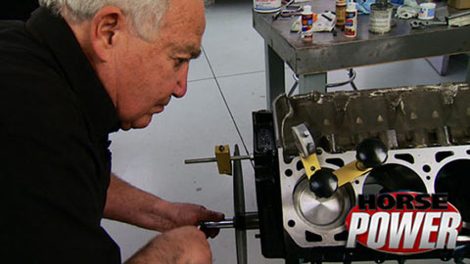HorsePower Builds
Want more content like this?
Join the PowerNation Email NewsletterParts Used In This Episode
Comp Cams
Xtreme Energy Hydraulic Flat Tappet Camshaft, Hydraulic-Street / Strip, needs 9:1 comp. 2800+ stall, headers, gears, rough idle. Pro Magnum Hydraulic Lifters; Olds (V8 260-455) Pontiac (V8 326-455). Both have been infused with Pro Plasma Nitriding Treatment.
Federal-Mogul Corporation
Piston. Oldsmobile 455, Forged Dish -.142cc, 4.155 in. Bore, .030.
Certified Auto Recycling
Used 455 Oldsmobile Complete
HorsepowerSales.net
Valley Girdle Pro, Ford Small Block.
Interdynamics Inc.
Motor Oil Super Seal, Coolant Super Seal, ATF Super Seal, Power Steering Super Seal.
Kimberly-Clark Professional
WYPALL* Red Shop Towels.
MAHLE Aftermarket
Connecting rod bearings, Main bearings, Cam bearings
Mondello Tech Center
Machining of block surfaces, align hone crank mains, hone cylinder bores, resize rods, balance rotating assembly, polish crank journals, port cylinder heads, valve angle grind, deburr block casting, install and measure bearing tolerances, install oil restrictors and oil galley plugs, modify timing set, file piston rings and degree camshaft.
O'Reilly Auto Parts
Oil Pump Driveshaft
O'Reilly Auto Parts
White acrylic enamel paint and reducer
O'Reilly Auto Parts
High Volume Oil Pump
O'Reilly Auto Parts
Valve Stem Seals
O'Reilly Auto Parts
Water Neck





























